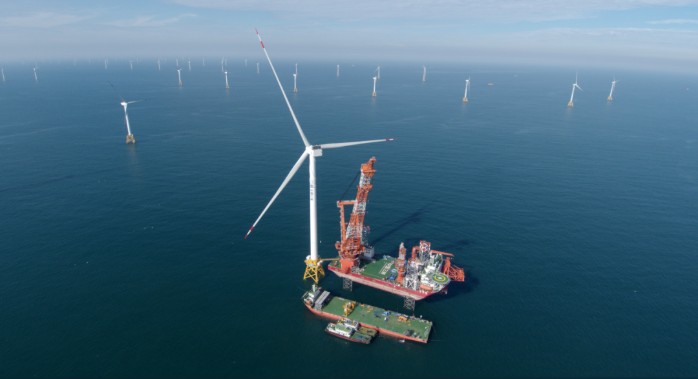
By Anders Lorenzen
If you ask the world’s key players in the global wind power industry, 2023 was a year to forget.
While the industry sentiment is that 2024 will be a more positive year, the impacts of 2023 are starting to be felt.
The world’s three biggest companies operating in the sector; Siemens Energy, Orsted and Vestas this week gave a less optimistic view about what’s to come in 2024, as the industry continues to struggle with project delays, equipment problems and inflation.
Siemens Energy, the largest offshore wind turbine producer, expects a loss in 2024 of € 2 billion from its parent company Siemens Gamesa. The wind power division of Siemens is dealing with the cost of addressing quality problems impacting some of its onshore models.
The CEO of Siemens Energy, Christian Bruch, offered this view: “The speed at which grids and renewables are expanding is still not sufficient”. He added that most of the projected growth was to be found in China. That country already leaves the world trailing the goal to triple renewable energy capacity agreed during last year`s COP28 UN climate summit in Dubai, which leaves the world on track for only a two-and-a-half-fold increase by 2030.
Rising costs
The woes of the global wind industry are being aided by rising costs of raw materials and components, in addition to regulatory delays resulting in write-downs, the biggest losers are turbine makers.
To revive the sector, key industry players are calling for the sector to be reformed, with governments needing to play a bigger role in delivering a functioning market model.
A key investor in the wind market is the Danish pension fund; Akademikerpension. Its Chief Investment Officer, Anders Schelde, said that the market conditions in offshore wind needed to be reset to make the sector profitable again.
The Danish wind turbine maker Vestas had a positive profitable fourth quarter, but the world’s biggest wind turbine maker said it would not pay a dividend for 2023. Its CEO, Henrik Andersen, said that challenges would continue to trouble the sector throughout the year.
But perhaps the biggest troubles are to be found in Orsted, the Danish partly state-funded offshore wind installer. They have had to question many projects including write-downs on US projects, a market they have only recently entered. The world’s leading offshore wind installer has already announced 250 redundancies with an additional 600-800 jobs at risk.
Its CEO, Mads Nipper stated: “In order to improve our competitiveness, ensure value creation, and ensure our ability to attract capital to the renewable build-out, we will make Orsted a leaner and more efficient company.”